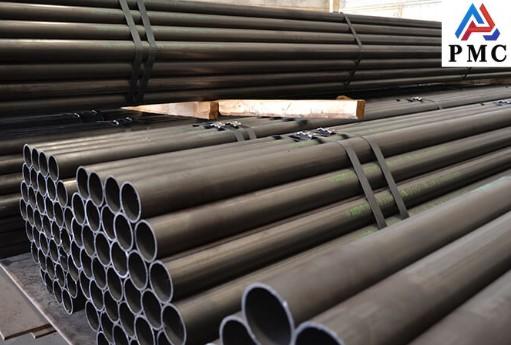
Carbon Steel Pipe vs Seamless Steel Pipe
To distinguish between carbon steel pipes and seamless steel pipes, we first look at the defining dimensions: carbon steel pipes are based on iron and carbon and contain a small amount of silicon and manganese, and are divided into low/medium/high carbon steel (carbon content <0.25%, 0.25%-0.6%, >0.6%), which are low-cost and easy to process; seamless pipes are made of steel billets through perforation and rolling without welds, with excellent strength and pressure resistance, and are suitable for harsh scenarios. The difference in dimensions between the two leads to many subsequent differences.
The processing technology is very different
Carbon steel pipe processing techniques are diverse, mainly including cold drawing, hot rolling, and welding: cold drawing and hot rolling of small-diameter pipes improves precision and surface quality, and is suitable for small-diameter, high-requirement scenarios; hot rolling rolls steel billets at high temperatures to change the structure and improve performance, and is used for large-diameter, thick-walled pipes; welded pipes are made by curling and welding steel strips/steel plates, which is efficient and low-cost and can be made in different specifications.
The seamless steel pipe process is more sophisticated, and the core is to ensure that there are no welds. Hot rolling piercing and cold rolling/cold drawing are commonly used: first, the solid tube billet is heated to a high temperature and pierced into a hollow shell tube, and then hot rolling or cold rolling/cold drawing are performed to optimize the accuracy, surface and performance. Parameters such as temperature and rolling speed must be precisely controlled to ensure stable quality and adaptability to harsh scenarios.
Each has its own advantages and disadvantages
The performance of carbon steel pipes varies with the carbon content: low carbon steel has good plasticity and toughness, and is suitable for building structural parts; medium and high carbon steel has high strength but low toughness, and is suitable for mechanical parts, tools, etc.; its corrosion resistance is weak and it is easy to rust, so it needs to be painted and galvanized for corrosion protection. Due to its low cost, it is widely used in general scenarios.
Seamless steel pipes are characterized by high strength, high toughness and high pressure resistance. They have no welds, so the structure is uniform and reliable under high pressure and low temperature. They are suitable for high-end fields such as oil and gas transportation and high-pressure boilers. However, defects such as porosity in raw materials may occur during production, requiring stricter processes and quality control.

Application scenarios revealed
Carbon steel pipes have low cost, are easy to process, and have clear application scenarios: Q235 and other types are used in buildings to make frames and support columns to meet conventional loads; 10# low-carbon steel is used for ordinary fluid transportation such as urban water supply and industrial cooling water systems. The smooth inner wall reduces resistance, is cost-effective, and meets pressure resistance standards.
Seamless steel pipes are essential for high-pressure transportation (long-distance oil and gas pipelines, high-pressure boiler tubes) due to their high strength and pressure resistance, ensuring safe operation under high pressure. They are also used in precision machinery manufacturing, such as automobile engines and aerospace components, to meet equipment requirements with high precision and excellent performance.
|
Aspect |
Carbon Steel Pipe |
Seamless Steel Pipe |
|
Definition |
Pipe made from carbon steel as the main material. |
Pipe manufactured without a weld seam. |
|
Basis of Classification |
Based on material composition (carbon content). |
Based on manufacturing process (no weld). |
|
Material Scope |
Only carbon steel. |
Carbon steel, alloy steel, or stainless steel. |
|
Manufacturing Process |
Produced by hot rolling, extrusion, or piercing. |
|
|
Strength |
Varies by type (welded lower; seamless higher). |
Generally stronger with higher pressure resistance. |
|
Surface |
Welded pipe has a seam; seamless pipe is smooth and uniform. |
Smooth, continuous, no seam. |
|
Performance |
Good for low to medium pressure/temperature service. |
Ideal for high-pressure, high-temperature applications. |
|
Cost |
More cost-effective, especially welded pipes. |
More expensive due to complex production. |
|
Applications |
Water pipelines, structural support, general industry. |
Oil & gas, boilers, heat exchangers, pressure vessels. |
Read more: Carbon Steel Pipe vs Mild Steel Pipe
- 【Prev】 : Seamless Pipe Material for Structure
- 【Next】 : Rectangular Tube vs Round Tube


